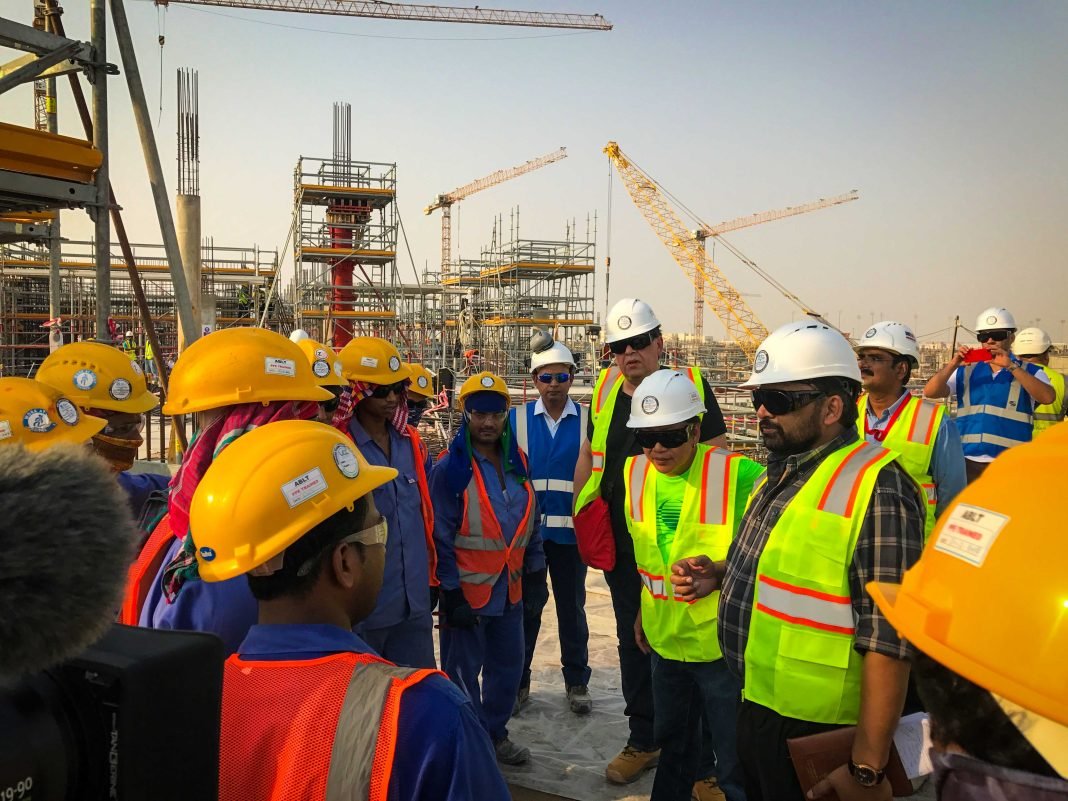Construction is a fundamental part of our world, shaping the environment we live in and influencing our daily lives. It involves the process of building structures, from homes and offices to bridges and roads. This field encompasses a wide range of activities, including planning, design, and execution, and it plays a critical role in the economy by providing jobs and contributing to community development. The construction industry not only provides the infrastructure that supports modern life but also reflects the technological and creative advances of society. Understanding construction helps us appreciate the complexity behind the buildings and infrastructure we often take for granted.
Major Types of Construction Projects
Residential Construction
Residential construction focuses on building homes and apartments where people live. This type of construction includes single-family houses, multi-family units like duplexes and condominiums, and apartment buildings. The goal is to create safe, functional, and comfortable living spaces. The design and construction processes must meet various regulations and standards to ensure the safety and durability of the structures. Residential projects often involve working closely with homeowners to meet their specific needs and preferences, making it a highly personalized aspect of the construction industry.
Commercial Construction
Commercial construction involves building structures used for business purposes. This includes office buildings, shopping malls, retail stores, and restaurants. The focus here is on creating spaces that are not only functional but also appealing to customers and employees. Commercial projects often require extensive planning and design to accommodate the needs of various businesses, such as meeting high traffic demands or incorporating advanced technology. These projects typically have stricter timelines and budget constraints compared to residential construction, reflecting their importance in the business world.
Industrial Construction
Industrial construction pertains to the creation of facilities for manufacturing, production, and storage. This includes factories, warehouses, and distribution centers. The main focus is on designing and constructing structures that support efficient operations and safety. Industrial buildings often require specialized designs to accommodate large machinery and high volumes of production. The construction process for industrial projects can be complex, involving rigorous safety standards and significant logistical planning to ensure the structures meet operational requirements.
Infrastructure Construction
Infrastructure construction is crucial for maintaining and developing public utilities and transportation networks. This includes building roads, bridges, airports, and water treatment facilities. These projects are essential for ensuring that communities have access to necessary services and can move efficiently from place to place. Infrastructure construction often involves large-scale projects with significant budgets and long timelines. The goal is to create durable, reliable systems that support public welfare and economic activity.
Essential Phases of a Construction Project
Planning and Design
The planning and design phase is the first and one of the most critical steps in a construction project. This stage involves defining the project’s objectives, creating detailed plans, and determining the resources needed. Architects and engineers play key roles in this phase, working together to develop designs that meet the client’s needs and adhere to regulations. They create blueprints and models to visualize the final product and ensure that all aspects of the project are well thought out before construction begins. Proper planning helps to avoid costly mistakes and delays.
Permits and Regulations
Before construction can start, obtaining the necessary permits and ensuring compliance with regulations is essential. This involves securing approvals from local government authorities and adhering to building codes and safety standards. Regulations are put in place to ensure that construction projects are safe, environmentally friendly, and meet community needs. Navigating the permit process can be complex, but it is a critical step to avoid legal issues and ensure the project meets all required standards.
Construction Phase
The construction phase is where the plans and designs are put into action. This stage involves the actual building of the structure, including excavation, foundation work, framing, and finishing. Construction workers, including contractors, laborers, and subcontractors, collaborate to complete the project according to the approved designs and timeline. Effective management and coordination are crucial during this phase to ensure that work proceeds smoothly, on schedule, and within budget.
Inspection and Quality Control
Inspection and quality control are vital to ensuring that the construction project meets all safety and quality standards. During this phase, inspectors check the work to ensure it complies with the building codes and design specifications. Quality control involves verifying that materials and workmanship are up to standard and addressing any issues that arise. Regular inspections help identify and rectify problems early, reducing the risk of costly repairs and ensuring the safety and durability of the final product.
Completion and Handover
Once construction is finished, the project moves into the completion and handover phase. This involves finalizing any remaining tasks, conducting a final inspection, and addressing any last-minute issues. The completed project is then handed over to the owner or occupant. This phase also includes providing documentation such as warranties and maintenance instructions. The goal is to ensure that the project is fully ready for use and meets all contractual and regulatory requirements.
Key Construction Materials and Techniques
Common Materials
Construction relies on a variety of materials, each chosen for its specific properties and suitability for the project. Concrete is widely used for its strength and durability, making it ideal for foundations, walls, and pavements. Steel is favored for its strength-to-weight ratio, used in structural frameworks and reinforcing concrete. Wood is a versatile material used in framing, flooring, and finishing. Each material has its advantages and is selected based on the project’s requirements, budget, and design.
Modern Construction Techniques
Modern construction techniques have revolutionized the industry, making projects more efficient and sustainable. Prefabrication involves manufacturing building components in a factory setting before transporting them to the construction site for assembly. This method speeds up construction and improves quality control. Green building methods focus on sustainability, incorporating energy-efficient systems, sustainable materials, and practices that reduce environmental impact. These techniques are increasingly popular as they contribute to energy savings and environmental preservation.
The Role of Technology in Modern Construction
Building Information Modeling (BIM)
Building Information Modeling (BIM) is a technological advancement that has transformed the construction industry. BIM involves creating a digital model of a building that includes detailed information about its design, materials, and systems. This model allows for better planning, visualization, and coordination among all project stakeholders. By using BIM, construction teams can identify potential issues before construction begins, streamline workflows, and improve overall project efficiency.
Drones and Robotics
Drones and robotics are increasingly used in construction to enhance accuracy and efficiency. Drones can capture aerial images and data, providing valuable insights into site conditions and progress. They are useful for surveying, mapping, and monitoring construction sites. Robotics, such as automated machinery and 3D printers, are used for tasks like bricklaying and concrete pouring. These technologies help reduce labor costs, improve precision, and accelerate construction processes.
Sustainable and Smart Building Technologies
Sustainable and smart building technologies are shaping the future of construction. Sustainable technologies focus on reducing energy consumption and environmental impact through features like solar panels, energy-efficient HVAC systems, and water-saving fixtures. Smart building technologies integrate advanced controls and sensors to optimize energy use, enhance security, and improve comfort. These innovations contribute to creating buildings that are not only environmentally friendly but also more efficient and responsive to occupants’ needs.
Challenges in the Construction Industry
Budget and Time Management
Managing budgets and timelines is a significant challenge in the construction industry. Projects often face unexpected costs and delays due to various factors, such as changes in design, unforeseen site conditions, or supply chain issues. Effective project management involves careful planning, accurate budgeting, and proactive risk management to keep the project on track and within budget. Staying within financial and time constraints requires close coordination among all parties involved and efficient use of resources.
Safety Concerns
Safety is a top priority in construction due to the inherent risks associated with the industry. Construction sites are often hazardous, with heavy machinery, elevated work areas, and various materials and tools. Ensuring the safety of workers involves implementing strict safety protocols, providing appropriate training, and using protective equipment. Regular safety inspections and adherence to regulations are crucial to preventing accidents and maintaining a safe work environment.
Environmental Impact
The construction industry has a significant impact on the environment, from resource extraction to waste generation. Addressing environmental concerns involves adopting practices that minimize harm, such as using sustainable materials, reducing waste, and implementing energy-efficient designs. Green building practices and environmental regulations aim to mitigate the industry’s impact on natural resources and promote sustainability.
Future Trends in Construction
Innovations and Emerging Technologies
The construction industry is continuously evolving with new innovations and technologies. Emerging trends include advancements in materials, such as high-performance concrete and advanced insulation, as well as new construction methods like modular and off-site construction. These innovations aim to improve efficiency, reduce costs, and enhance the quality of construction. Staying updated with the latest technologies allows the industry to adapt and meet the changing demands of modern construction projects.
Changes in Building Practices
Building practices are evolving to address modern challenges and opportunities. There is a growing emphasis on sustainability, energy efficiency, and smart technologies. Building designs are incorporating more sustainable features, such as green roofs and energy-efficient systems, while construction methods are becoming more streamlined and collaborative. These changes reflect a shift towards creating buildings that are not only functional but also environmentally responsible and adaptable to future needs.
Conclusion
Understanding construction is essential for appreciating the complexity and significance of the built environment. From residential and commercial buildings to infrastructure projects, construction plays a vital role in shaping our world. By exploring the key phases, materials, techniques, and challenges in construction, we gain insight into how structures are created and maintained. As technology and practices continue to evolve, the construction industry will adapt to meet new demands and opportunities, contributing to the development of a more sustainable and efficient built environment.




